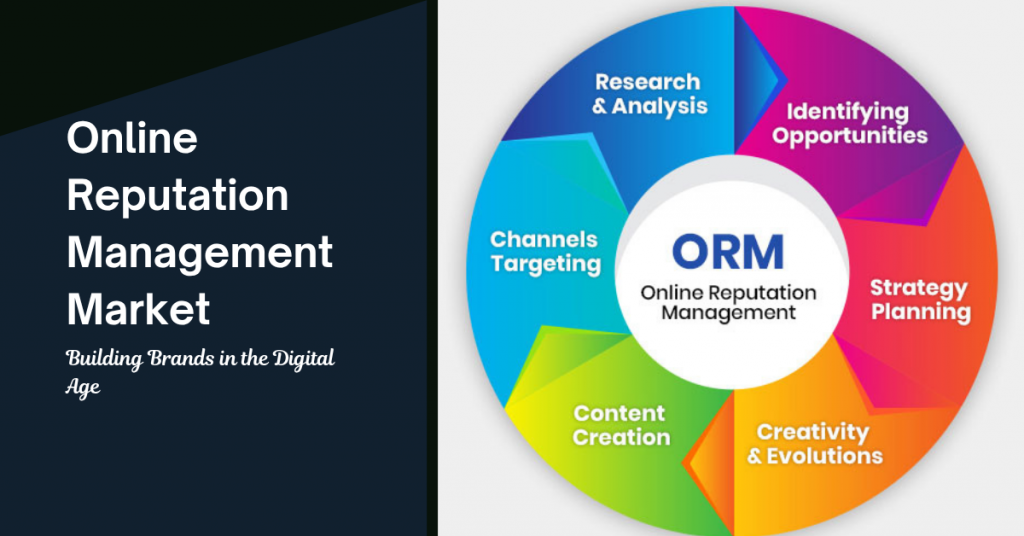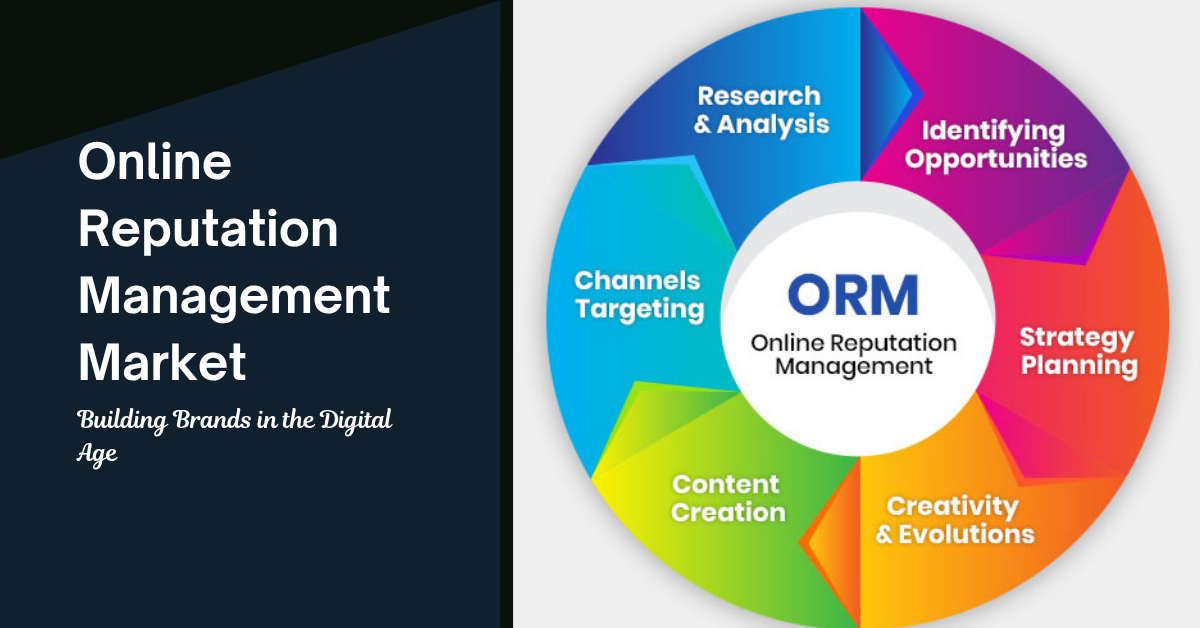
Market Overview
The Online Reputation Management (ORM) Market is projected to grow from USD 4523 million in 2024 to an estimated USD 17,456.02 million by 2032, with a compound annual growth rate (CAGR) of 16.19% from 2024 to 2032. The exponential increase reflects the growing emphasis on digital visibility, brand perception, and consumer engagement across all business sectors. Organizations understand that online perception directly impacts bottom lines, making ORM an essential investment rather than an optional enhancement.
The digital economy has enabled rapid information exchange, but it has also exposed businesses and individuals to reputation volatility. Search engine results, social media content, and customer reviews now play critical roles in shaping a brand’s identity. Industries such as healthcare, education, finance, and retail are under particular pressure to manage their digital presence efficiently. ORM tools are evolving beyond just review management, now encompassing AI, data analytics, and real-time sentiment tracking.
With heightened sensitivity to brand credibility and consumer trust, businesses are deploying ORM strategies as a shield against misinformation, negative publicity, and brand misrepresentation. The future of this market lies in integrating advanced technologies that ensure reputation resilience in an increasingly transparent and connected world.
Get full details: https://www.credenceresearch.com/report/online-reputation-management-market
Market Drivers
Proliferation of User-Generated Content
The surge of user-generated content on platforms like Reddit, YouTube, and Instagram has reshaped public discourse around brands. Consumers now rely more on peer reviews and social content than traditional advertisements. Businesses face constant scrutiny, with reputations being built or damaged by user content. ORM tools help brands monitor such mentions across channels. User-generated content is unpredictable, making real-time monitoring critical. This evolution underscores why companies are investing in robust ORM platforms to manage content perception and user engagement.
Emergence of Review Aggregators
Websites such as Trustpilot, TripAdvisor, and Glassdoor serve as centralized review sources, influencing buying decisions and employer branding. These platforms amplify consumer voice, making every review a potential marketing asset or liability. ORM tools have evolved to aggregate and respond to reviews across multiple channels. Companies are now focusing on optimizing customer journeys to improve their review scores. ORM platforms provide actionable insights to enhance product and service delivery. Businesses unable to manage aggregator profiles risk falling behind their competitors.
Shift to Omnichannel Reputation Management
Customers now interact with brands via websites, mobile apps, messaging platforms, and social media. Managing reputation across this fragmented ecosystem is increasingly complex. ORM systems must collect and assess feedback from diverse digital touchpoints. Brands aim to present a consistent image across channels, especially when expanding globally. This need for seamless integration has made omnichannel ORM a major market driver. Enterprises now prioritize platforms that support API-based data gathering and cross-platform reputation scoring.
Increased Cybersecurity Threats and Misinformation
Rising incidents of data breaches, phishing attacks, and fake news have made consumers more cautious. Any breach of trust can lead to viral backlash and long-term brand damage. ORM tools are increasingly integrated with cybersecurity measures to identify fake accounts and bot activity. Companies use ORM to detect and respond to false narratives swiftly. Digital trust has become as valuable as product quality, especially in high-risk sectors. Managing misinformation effectively is now a vital component of ORM strategies.
Market Challenges
Evolving Data Privacy Norms
Compliance with privacy frameworks like GDPR, CCPA, and India’s DPDP Act creates complexity in ORM practices. Brands must balance transparency with compliance when managing customer reviews and user data. Inconsistent global standards make unified ORM deployment difficult. Providers must regularly update their systems to reflect changing legal landscapes. Mishandling data can not only damage reputation but also result in legal penalties. This regulatory environment demands continuous vigilance and investment in privacy-first ORM models.
Lack of Industry-Specific ORM Solutions
Generic ORM platforms may not fully address the needs of specialized industries. For example, healthcare and legal firms require features like HIPAA compliance or case-sensitive language handling. This lack of customization limits adoption in highly regulated sectors. Providers are beginning to introduce vertical-focused modules, but adoption remains uneven. Industry-specific language modeling and review classification are still in early stages. This leaves many sectors underserved, creating a barrier to market expansion.
Inconsistent Measurement Metrics
There is no standard way to quantify online reputation across industries or regions. Metrics like sentiment scores, star ratings, and net promoter scores (NPS) vary widely. This inconsistency makes benchmarking and ROI analysis difficult. Without unified KPIs, comparing ORM success across brands is problematic. Businesses may misinterpret performance or overlook critical feedback trends. Establishing consistent and reliable ORM benchmarks remains a market-wide challenge.
Budget Limitations in Developing Markets
While the need for ORM is high in developing countries, budgetary constraints often prevent widespread adoption. Many SMEs are unaware of low-cost solutions or hesitate due to unclear ROI. This limits the market scope for service providers targeting emerging economies. Providers must innovate pricing models or offer tiered services. Educating potential clients is as critical as marketing the tools. Budget sensitivity remains a hurdle to market saturation in low-income segments.
Market Opportunity
Voice and Visual Search Integration
As users increasingly rely on voice and image-based searches, ORM tools must evolve to track brand mentions in multimedia formats. Integrating NLP for voice reviews and AI-based image tagging opens new frontiers. Brands can now manage reputational data from podcasts, YouTube, and visual platforms. This shift creates room for innovation in ORM UX and data models. Companies investing early in this integration gain a competitive edge.
ORM in the Political and Government Sector
Public institutions and political entities are embracing ORM to manage citizen feedback and public image. The increasing digitization of government services demands transparent and responsive engagement. ORM tools tailored to public sector compliance and sentiment analysis are gaining traction. Managing policy communication and public reactions in real time is vital for governance. This niche presents untapped growth potential for vendors offering secure, regulation-ready solutions.
AI-Powered Personalization of ORM
The next wave of ORM platforms will use AI to deliver personalized alerts and recommendations. Businesses can fine-tune responses based on customer type, geography, or channel. This micro-level customization improves engagement and perception management. AI models will evolve to understand tone, sarcasm, and even emojis in feedback. Personalization will not just improve brand image but also optimize customer retention. This direction opens doors for product differentiation and client stickiness.
Expansion into Multilingual ORM Services
As brands go global, they must manage reputations in multiple languages and cultural contexts. ORM vendors are incorporating real-time translation and culturally aware sentiment analysis. This feature is especially valuable in Asia Pacific, Latin America, and the Middle East. Language adaptability strengthens a brand’s credibility in new markets. Multilingual ORM also enables hyper-localization for franchise-based models. Providers offering this functionality can tap into large international client bases.
Market Segmentation
By Component
- Software
- Services
By Deployment Mode
- Cloud-Based
- On-Premises
By Organization Size
- Large Enterprises
- Small and Medium-Sized Enterprises (SMEs)
By Application
- Healthcare
- Automotive
- Hospitality
- Financial Services
- Media & Entertainment
- Retail & E-commerce
- Education
- Government
- Others
By Region
- North America
- U.S.
- Canada
- Mexico
- Europe
- UK, France, Germany, Italy, Spain
- Russia, Belgium, Netherlands, Austria
- Sweden, Poland, Denmark, Switzerland
- Rest of Europe
- Asia Pacific
- China, Japan, South Korea, India
- Australia, Thailand, Indonesia, Vietnam
- Malaysia, Philippines, Taiwan
- Rest of Asia Pacific
- Latin America
- Brazil, Argentina, Peru, Chile, Colombia
- Rest of Latin America
- Middle East & Africa
- GCC Countries
- South Africa
- Rest of Middle East and Africa
Regional Analysis
North America
The North American ORM market benefits from widespread digital maturity and established enterprise software ecosystems. U.S.-based companies are investing in AI and predictive ORM solutions to maintain public trust. Canada follows closely with a focus on ethical branding and multilingual ORM offerings. Leading tech vendors are headquartered in the region, pushing constant platform innovation. There is a strong emphasis on transparency and customer responsiveness. Integration with CRM and ad tech platforms is highly prevalent. Regulatory policies also encourage corporate accountability and reputation safeguards.
Europe
Europe emphasizes compliance, data privacy, and consumer protection in ORM. Nations like the UK and Germany lead adoption due to tight industry regulations and brand-conscious consumers. ORM tools in this region are tailored for GDPR-readiness and ethical review management. European companies often seek audit trails and automated compliance reporting. The financial services and education sectors show particularly strong adoption. Multilingual ORM capabilities are a key requirement. Overall, ORM adoption is stable, legal-focused, and consumer-driven.
Asia Pacific
Asia Pacific remains a high-growth ORM region, supported by digital-first economies and booming e-commerce. India, China, and Southeast Asia are witnessing rapid platform uptake across startups and SMEs. ORM is increasingly used in influencer marketing and social commerce. Mobile-first ORM solutions are gaining popularity due to smartphone saturation. Localized language support and affordability are critical product differentiators. Educational and hospitality sectors are early adopters of reputation tools. Regional growth is driven by brand visibility and community engagement efforts.
Latin America
Latin America’s ORM adoption is accelerating as small businesses embrace social media engagement. Brazil leads the region with rising ORM demand from travel, education, and retail sectors. ORM is used to manage multilingual customer interactions and online advertising performance. Cost-effective, cloud-first platforms are ideal for regional market needs. There is a cultural focus on customer service and public relations. ORM is also used by NGOs and public offices for trust-building. Although still emerging, the region shows significant growth potential.
Middle East & Africa
This region is seeing increased ORM use in government services, higher education, and political campaigns. The UAE and Saudi Arabia are investing in digital branding and citizen engagement platforms. ORM tools help manage policy-related feedback and service satisfaction. There is a strong drive to control narratives across media and online forums. Cloud adoption is rising among private healthcare and telecom brands. South Africa leads in ORM for social justice and advocacy groups. Regional demand is driven by public perception and controlled media messaging.
Top Companies
- BirdEye
- Podium
- WebiMax
- ReputationDefender
- BrandYourself
- Thrive Internet Marketing Agency
- ReviewTrackers
- LocalEdge
- SEO Image
- Hootsuite
Future Outlook
- Personalized ORM dashboards will cater to industry-specific needs using machine learning.
- ORM platforms will collaborate with legal tech firms for improved takedown procedures.
- Real-time alerts will evolve with biometric and emotion recognition technologies.
- Social media listening will integrate behavioral analytics to forecast consumer reactions.
- ORM in e-governance and civic platforms will increase citizen satisfaction tracking.
- APIs will allow seamless ORM integration with HR, CRM, and CX platforms.
- ORM platforms will support sustainability metrics to align with ESG initiatives.
- Freelancers and gig workers will increasingly rely on personal ORM to attract clients.
- ORM solutions will expand into Metaverse and VR environments for brand monitoring.
- Automated ORM bots will handle multilingual interactions with NLP-powered empathy.
Get full details: https://www.credenceresearch.com/report/online-reputation-management-market










